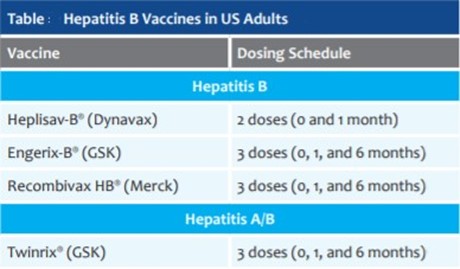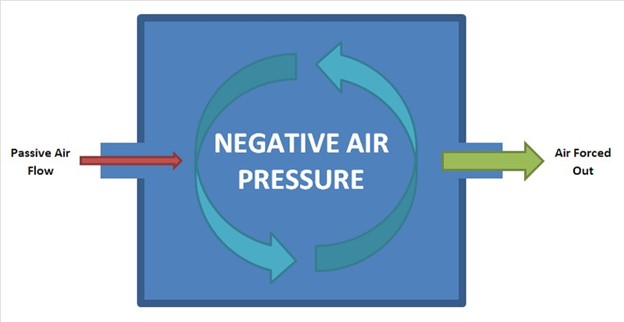A nurse is teaching a group of middle age adults about various types of hepatitis.
What statement by one of the group members indicates correct understanding of the differences?
“I can get sick with hepatitis A from unprotected sex.”.
“I need to receive 3 doses of hepatitis B vaccination to assure protection.”.
“I can’t get hepatitis C from IV drug use, but hand hygiene after toileting is essential.”.
“There is no vaccination for hepatitis A, but I can take 8-12 weeks of oral medication to cure it.”.
The Correct Answer is B
.“I need to receive 3 doses of hepatitis B vaccination to assure protection.” This statement indicates that the person understands that hepatitis B is a serious infection that can be prevented by vaccination.
Hepatitis B vaccine is given as a series of 3 shots over a period of 6 months.

Choice A is wrong because hepatitis A is not usually transmitted through unprotected sex, but through ingestion of contaminated food or water or direct contact with an infected person.
Hepatitis A can also be prevented by vaccination.
Choice C is wrong because hepatitis C can be transmitted through IV drug use, as well as blood transfusions, organ transplants, needlestick injuries, and sharing personal items such as razors or toothbrushes with an infected person.
Hepatitis C can cause chronic liver disease and there is no vaccine for it.
Choice D is wrong because there is a vaccine for hepatitis A, which can provide lifelong protection against the infection.
Hepatitis A usually does not require treatment and most people recover completely within a few weeks. There is no specific medication to cure hepatitis
Nursing Test Bank
Naxlex Comprehensive Predictor Exams
Related Questions
Correct Answer is ["E"]
Explanation
A private room with negative air pressure is required to care for a client with suspected or confirmed tuberculosis (TB) disease, as this is part of the airborne precautions recommended by the CDC.

A private room with negative air pressure prevents the spread of infectious droplet nuclei that contain the TB bacteria.
Choice A is wrong because gloves, masks, and gowns are not sufficient to protect against TB transmission.
Gloves and gowns are used for contact precautions, which are not indicated for TB.
A regular mask is also not effective in filtering out the small droplet nuclei that carry the TB bacteria.
Choice B is wrong because an N95 mask is not a precaution for the client, but for the healthcare personnel who are in close contact with the client.
An N95 mask is a type of respirator that can filter out at least 95% of airborne particles, including TB bacteria. Health care personnel should wear an N95 mask when entering the client’s room or performing aerosol-generating procedures on the client.
Choice C is wrong because droplet precautions are not indicated for TB.
Droplet precautions are used for infections that are spread by large respiratory droplets that do not remain suspended in the air, such as influenza or pertussis. Droplet precautions require wearing a regular mask and eye protection when within 6 feet of the client.
Choice D is wrong because contact precautions are not indicated for TB.
Contact precautions are used for infections that are spread by direct or indirect contact with the client or the client’s environment, such as Clostridium difficile or MRSA. Contact
Correct Answer is B
Explanation
According to the Addiction Nursing Competencies, antisocial personality traits are one of the risk factors for developing addictive behaviors.
Antisocial personality disorder is characterized by a disregard for the rights and feelings of others, impulsivity, deceitfulness, and lack of remorse.
Choice A is wrong because high self-esteem is not associated with addictive behaviors. On the contrary, low self-esteem, passivity, and inability to relax or defer gratification are some of the personality factors that can predispose a person to substance use disorders.
Choice C is wrong because good communication skills are not related to addictive
behaviors. In fact, poor communication skills, social isolation, and lack of support are some of the psychosocial factors that can contribute to substance use disorders.
Choice D is wrong because aggressive behaviors are not a specific indicator of addictive behaviors.
Aggression can be a result of various factors, such as frustration, anger, stress, or mental illness. Aggression can also be influenced by the type and amount of substance used.
Whether you are a student looking to ace your exams or a practicing nurse seeking to enhance your expertise , our nursing education contents will empower you with the confidence and competence to make a difference in the lives of patients and become a respected leader in the healthcare field.
Visit Naxlex, invest in your future and unlock endless possibilities with our unparalleled nursing education contents today
Report Wrong Answer on the Current Question
Do you disagree with the answer? If yes, what is your expected answer? Explain.
Kindly be descriptive with the issue you are facing.
